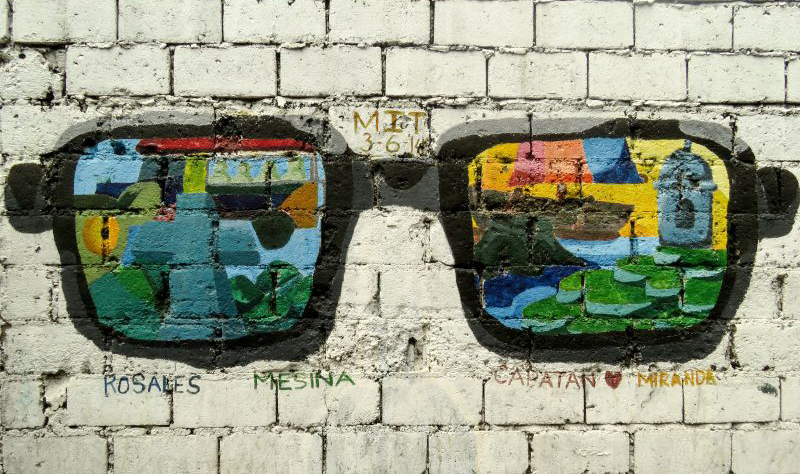Shifting focus to the Global South
A new seminar series at the University of Melbourne shifts focus to the Global South.

Titled The Southern Built Environments Research Seminar Series, the monthly series brings together Australian and international experts to shine a light on key issues facing the Global South with regard to both the natural and built environment, including major implications for settlements where these challenges emerge.
Broadly encompassing Asia, Africa, Latin America and Oceania, the Global South includes some of the most rapidly urbanising areas on the planet, yet these regions are often underrepresented in academia and dialogue around design and within the built environments sphere.
Looking towards the future, the Global South has a critical role to play regarding navigating climate change, growing populations, rapidly expanding cities and sustainability.
The series organiser, Associate Professor Derlie Mateo-Babiano, notes that the expertise and innovation emerging from Global South regions needs to be positioned more centrally in the design world, rather than remaining on the peripheral.
“What we want to do with this new series is to increase research engagement and knowledge exchange by maintaining a strong dialogue on Global South issues between University of Melbourne academics and Southern scholars” says Mateo-Babiano.
“Internationalising the curriculum can benefit a comprehensive built environment faculty such as ours yet the concept remains very contested” she adds, “we agree on the why, but not necessarily on the ‘what’ and ‘how.’
Change is already happening. As panelist Dr Amanda Achmadi points out in the second seminar of the series, over the last 10 years we are seeing more and more designers working in the Global South being recognised with prestigious architectural awards. Chile’s Alejandro Aravena and India’s Balkrishna Doshi have both won the Pritzker Prize, for example.
“This signifies the high quality of ideas and creations coming out of the Global South”, says Achmadi, “projects within the Global South should be held up as best practice much more frequently than they are”.
Seminar two, titled Positioning the Global South in Built Environments Curriculum, shifted focus to the role of the education sector in internationalising the curriculum, and therefore providing students and our future design professionals with a more balanced world outlook and experience.
Many design students will go on to work on projects situated in the Global South, so it makes sense to shift the curriculum from a predominantly Global North focused course content to a more diverse outlook incorporating projects, issues and challenges, as well as complex socio-spatial conditions from the Global South.
Moreover, particularly in Australia, many students are themselves from the Global South and have their own life and spatial experience to contribute to the discussion.
“Our students will be involved in the urbanisation of the future in the Global South. So, we need to embrace their perspectives and ensure our students have the most authentic internationalised experience and best knowledge base on which to begin their professional life”, explains Achmadi.
Co-panelist in seminar #2 Associate Professor of Landscape Architecture Jillian Walliss agrees, noting how her own teaching and research outlook has expanded since opening up her course content to include more perspectives from the Global South.
“In Landscape Architecture, when exploring dynamic mixed-use typologies, for example, you would not look to America, Europe or Australia for best practice at the moment, you would look to Asia, specifically Singapore in this case” she explains, “Australia can learn from places other than Europe and the USA, particularly given our own geographical and economic context”.
Co-panelist Dr Sidh Sintusingha further reflected on how a place can teach you, using the example of the Melbourne School of Design’s Travelling Studio method of teaching, where a class will physically be located abroad in an intensive two-weeks block.
“We need to embrace place as a 'teacher' - and let it teach you!” he says, noting that students’ experiences of culture shock and being immersed in a way of life different to what they are accustomed is integral to the teaching and learning activitiesandhas helped them to be more understanding of diverse contexts and cultures.
It’s important not to see the Global South as a different place, but as a framework to approach new possibilities of viewing population and spatiality.
Head to the Southern Built Environments Research Seminar Series website for more information on upcoming events. Upcoming focus areas include:
11 May 2022
Subaltern and minority occupations of space: histories, methods, lessons for design
(Focus on South Asia with Kelum Palipane, Anoma Pieris, Ishita Chatterjee and Yvette Putra)
08 June 2022 (Focus on the Middle East/Carribean with Sombol Mohkles)
20 July 2022 (Focus on Latin America)
10 August 2022 (Focus on Southeast Asia with Redento Recio and Kazi Fattah)
14 September 2022 (Focus on Africa with Raghu Dharmapuri Tirumala)
12 October 2022 (Focus on South Asia with Redento Recio and Kazi Fattah)
9 November 2022 (Reflection and Evaluation with Derlie Mateo-Babiano)